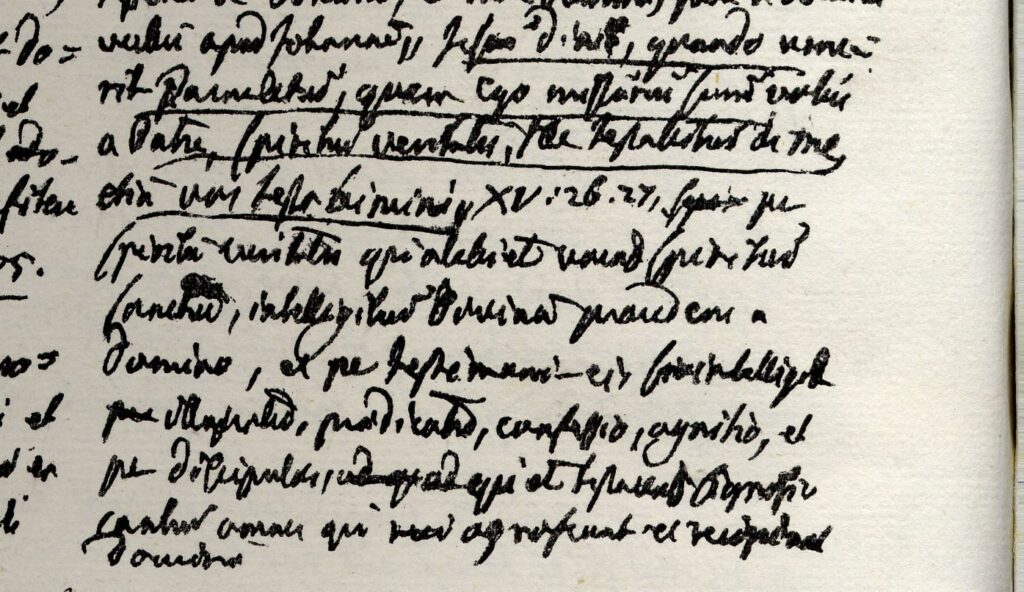When Jo. Fr. Immanuel Tafel died in 1863, he was still in the process of publishing Swedenborg’s works in Latin. This included new editions of works that Swedenborg himself had published a hundred years before, and which were becoming increasingly harder to purchase. But, in some ways more importantly, he was also putting into print manuscripts that he had from borrowed from the Royal Swedish Academy of Sciences (Kungliga Vetenskapsakademien) in Stockholm – manuscripts that Swedenborg himself had not published.
Tafel’s publications had been done partly at his own expense and partly with support from the Swedenborg Society and the General Convention of the New Jerusalem. As he had not, at the time of his death, completed the publication of the manuscripts, there was discussion between these bodies as to how to proceed. The Swedenborg Society was doubtful about the economics of continuing to print Latin editions, given the limited market there seemed to be for these. The General Convention then, in 1866, appointed a committee to explore the possibility of facsimile reprints of the manuscripts.
In the summer of 1868, Rudolph Tafel, the nephew of Immanuel, was dispatched from America to investigate the manuscripts in Sweden and the options for their publication and in September of that year, the chairman of the Convention Committee, the Rev. William H. Benade reported that it had been decided to use the new process of photolithography to reproduce the manuscripts. These works were among the first to copied in this way, and certainly constituted the largest project undertaken, up to that time, using this technology.
Now, 150 years later, the manuscripts are again being scanned and reproduced by the best technology available. Stokes Imaging Inc.( http://stokesimaging.com, the brainchild of John R. Stokes http://hangingtogether.org/?p=718 ) has created the most sophisticated digital imaging system yet built. The first major project that this system is being used on (apart from some testing at the Library of Congress) is the creation of a digital archive Swedenborg’s manuscripts.
In 2005, UNESCO made its first designations of Memory of the World treasures in Sweden. Two were so identified: the Astrid Lindgren archive and the manuscripts of Emanuel Swedenborg. The manuscripts were given to the Royal Swedish Academy of Sciences (RSAS) by Swedenborg’s heirs shortly after his death and that institution has been the steward of the manuscripts to this day. They are presently housed in the Center for History of Science, which is currently headed by Dr. Karl Grandin.
The Heavenly Doctrine Publishing Foundation undertook, in 2013, the financial support of a project to create high-resolution scans of the whole collection of Swedenborg’s manuscripts and printed works held by the RSAS. This has been a cooperative effort, with the HDPF providing funding for the imaging equipment and salaries for staffing, with Dr. Grandin graciously finding staff to do the scanning and supervising the work.
The project is now in its final phase. The RSAS will have the responsibility for online access to the scans, but the HDPF will be entitled to publish hard copy from the scans, or to include them in desktop software. Although the images produced by the photolithograph process were amazing for their time, the new high-resolution scans are of a far higher quality.
Below are examples of each, from the same portion of Apocalypse Explained 1232. Note that the photolithograph image is black and white – that there are no grays or gradations in the image. In the new scan there is color and shading. You can see the stains on the page and you can actually see parts of letters extending into blots. At the end of the quoted verses from John, there are quotation marks that look like two commas. These are quite distinct in the scan, but in the other image they run together with the ascending part of the l in “alibi” in the line below. The first word in the line below that is “sanctus.” In the scan, the tip of the t can be seen in the blot above, whereas in the photolithograph, it is lost in the cloud.
Below the images you will find both a rendition of the original Latin followed by an English translation.
In addition to providing much sharper images of Swedenborg’s manuscripts, this project will make them much more available to readers and translators around the world.


. . . verbis apud Johannem ,,Jesus dixit, quando venerit Paracletus, quem Ego missurus sum vobis a Patre, Spiritus veritatis, ille testabitur de Me; etiam vos testabimini,, xv: 26, 27, Spiri per Spiritum veritatis qui alibi etiam vocatur Spiritus Sanctus, intelligitur Divinum procedens a Domino, et per testimonium ejus si intelligitur per illustratio, praedicatio, confessio, agnitio; et per discipulos, ad qu ad qui etiam testarentur, signifycantur omnes qui reci agnoscunt et recipiunt Dominum.
. . . words in John: Jesus said, When the Paraclete is come, whom I shall send unto you from the Father, the spirit of truth, he shall bear witness of Me; and ye also shall bear witness, John 15:26-27, by the Spirit of truth, which is also called the Holy Spirit, is meant the Divine that proceeds from the Lord, and by its testimony is meant enlightenment, preaching, confession, acknowledgment; and by the disciples, who would also bear witness, are signified all who acknowledge and receive the Lord.
